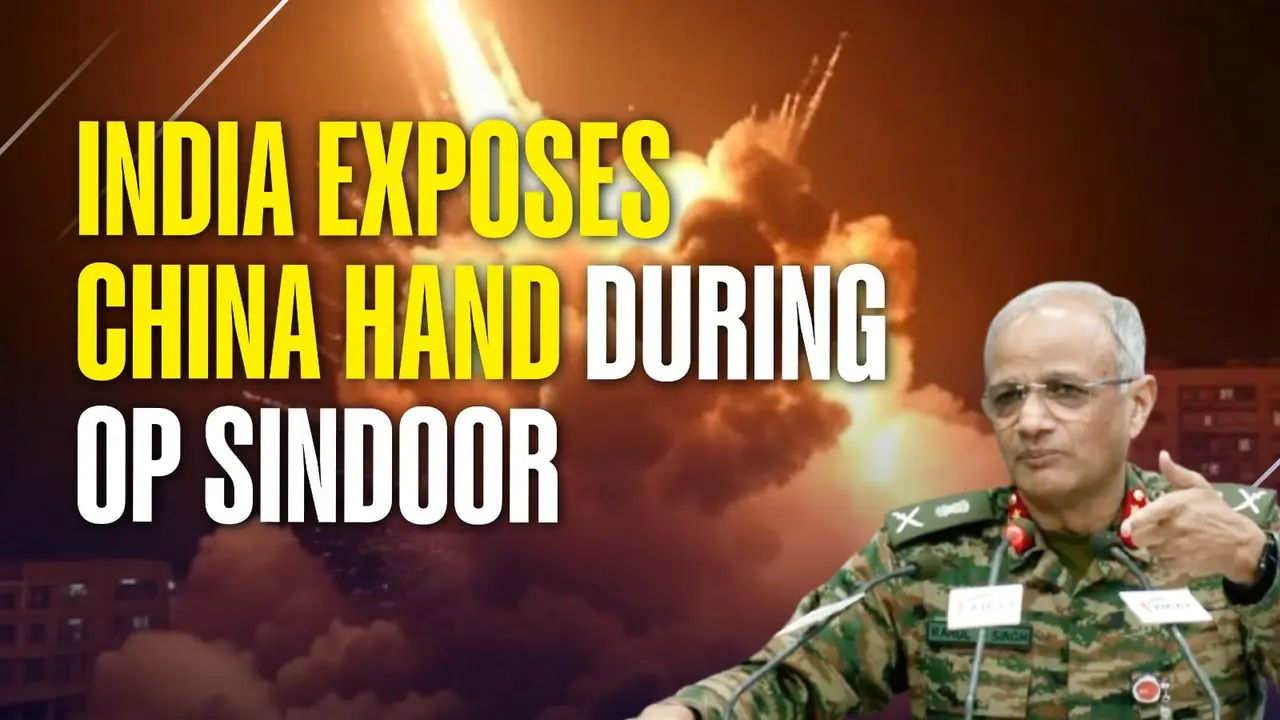Updated 4 July 2025 at 14:53 IST
‘One Border, 3 Enemies’: India Unmasks China-Pakistan-Turkey Nexus in Operation Sindoor, Top Army Official Reveals How Pakistan Begged for Ceasefire
In a big expose, Deputy Chief of Army Staff confirmed how China and Turkey supplied arms, drones and crucial intel to Pakistan during Operation Sindoor.
- India News
- 4 min read

In a striking revelation, the senior Indian Army leadership has publicly exposed the depth of the China-Pakistan military nexus during the recent Operation Sindoor. Lt Gen Rahul R Singh, Deputy Chief of Army Staff, in a damning expose, said that it wasn’t just Pakistan that was on the battlefield - China and Turkey were deeply involved, arming and guiding Islamabad in real-time throughout the conflict as Indian Armed Forces hit Pakistani air bases to avenge Pahalgam terror attack.
‘One Border, Three Adversaries’: Pak-China-Turkey Nexus
During a key address at the ‘New Age Military Technologies’ event hosted by FICCI, Lieutenant General Rahul R Singh laid bare the multi-front threat India confronted in May 2025.
“We had one border and two adversaries, actually three. Pakistan was in the front. China was providing all possible support…China is able to test its weapons against other weapons, so it’s like a live lab available to them. Turkey also played an important role in providing the type of support it did,” Singh said.
“It's no surprise because if you were to look at statistics, in the last five years, 81 per cent of the military hardware that Pakistan is getting is all Chinese,” he added indicating that Chinese fighter jets like the J-10 and JF-17, PL-15 missiles, and HQ-9 air defence systems were actively deployed by Pakistan during the clash.
Advertisement
Huge Operation Sindoor Revelation: China Leaked Info to Pakistan
Lt Gen Singh also revealed that during the DGMO-level talks between India and Pakistan, even as diplomacy was being attempted, China was transmitting real-time Indian military vectors to the Pakistani side. When DGMO-level talks were on, Pakistan had the live updates of our important vectors, from China.
Advertisement
“There was a punch that was ready. Pakistan realised that if it came through, they would be in a very bad condition. That’s why they asked for a ceasefire,” he added, while talking about the critical turning point in the four-day conflict that ran from May 7 to May 10.
The top Army official also confirmed that Turkey’s military role also came under scrutiny and Turkish drones were used to target Indian cities and strategic installations. However, India’s air defence network responded with precision, intercepting most of the projectiles before they could cause harm.
Lt Gen Singh also emphasised the need for continued advancement in India’s air defence systems.
Lessons Learnt From Operation Sindoor
The Deputy Chief of Army Staff revealed that India had identified 21 high-value targets, ultimately selecting nine for precision strikes using a joint tri-services offensive.
“It was only the final day or the final hour that the decision was taken that these nine targets would be engaged. A considered decision was taken that it will be a tri-services approach to send the right message that we indeed are an integrated force," he said.
On May 10, Indian forces struck 11 airbases across Pakistan, taking down radars, weapon systems, and command centres — a move that sent shockwaves in Pakistan. Islamabad was brought to its knees and it soon begged for a ceasefire.
Sharing the crucial lessons learnt from the Operation Sindoor, Lt Gen Rahul R Singh said, “The strategic messaging by leadership was unambiguous. There is no scope of absorbing the pain the way we did a few years ago. The planning and selection of targets was based on a lot of data that was collected using technology and human intelligence.”
"An important consideration was that we should always be at the top of the escalation ladder. When we reach a military objective, we should try and put a stop to it... War is easy to initiate, but it's very difficult to control. So I would say that was a very masterly stroke that was played to stop the war at an appropriate time..." he added.
WATCH PM Narendra Modi's address to the Nation on Operation Sindoor
Get Current Updates on India News, Entertainment News, Cricket News along with Latest News and Web Stories from India and around the world.
Published By : Moumita Mukherjee
Published On: 4 July 2025 at 14:53 IST
